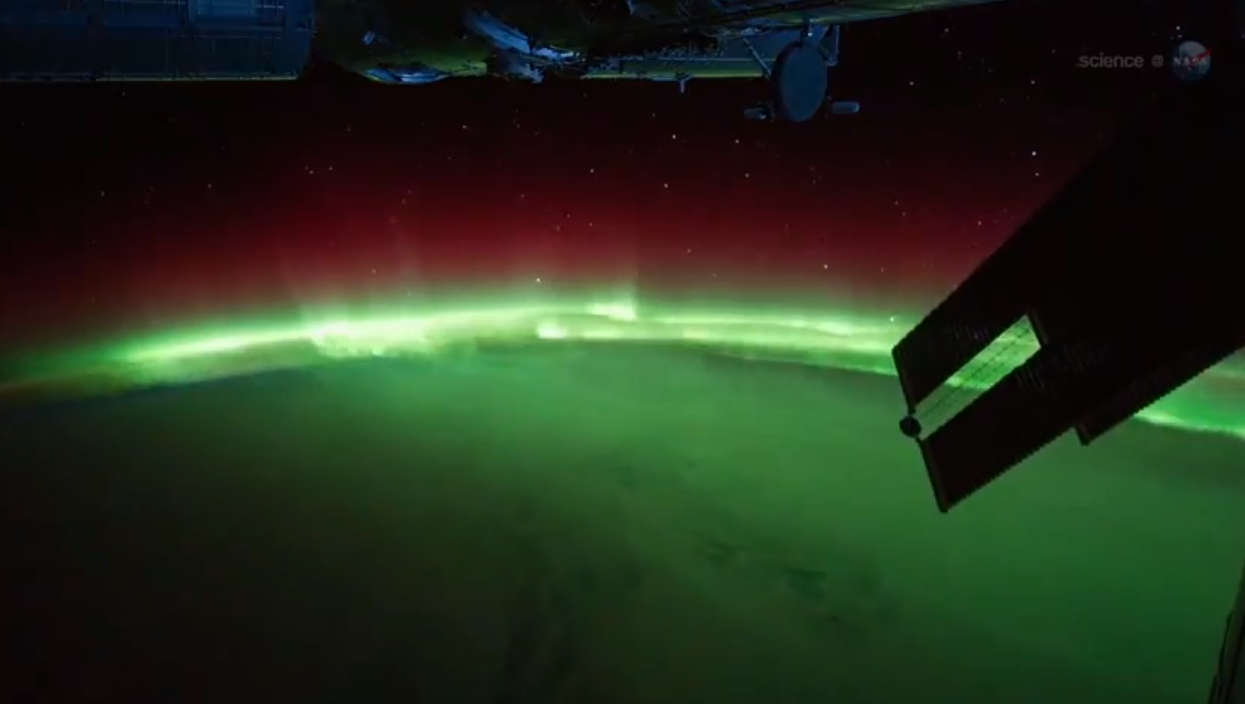Space Station Flies Through Spectacular Northern Lights Display in Astronaut Video

If you've ever been awestruck by the sight of the northern lights dancing overhead, imagine what it would be like to fly right through them.
Astronauts aboard the International Space Station don't have to imagine. They've zipped through some powerful geomagnetic storms recently, getting an up-close look at the auroras, which are also known as the northern and southern lights, amd captured the celestial light show in a dazzling new video.
"We can actually fly into the auroras," said NASA astronaut Don Pettit, a flight engineer for the orbiting lab's current Expedition 30. "It’s like being shrunk down and put inside of a neon sign."
One such experience came this past January, when a series of solar storms sparked intense light shows that Pettit said will be burned into his memory for years to come. He and his crewmates beamed a video of the spectacular space aurora display back to Earth for everyone to enjoy.
"The auroras could be seen [as brightly as] city lights on the Earth below, and even in the day-night terminator of the rising and setting sun," Pettit said. "It was simply amazing."
Auroras are caused when charged particles ejected from the sun slam into Earth's atmosphere. These particles are usually guided along Earth's magnetic field lines to the polar regions, which is why skywatchers in higher latitudes see them much more often than folks in more temperate climes do.
But big solar storms called coronal mass ejections can make the auroras visible to broad swathes of the planet. Coronal mass ejections can be triggered during the most intense solar storms and blast out huge clouds of solar plasma into space at 3 million mph (5 million kph) or more.
Get the Space.com Newsletter
Breaking space news, the latest updates on rocket launches, skywatching events and more!
If these clouds are aimed at Earth, they can pose a potential threat to the station's crew, as well as disrupt GPS signals, radio communications and power grids — and supercharge aurora displays. [Photos: Northern Lights of February 2012]
Pettit and other astronauts aboard the orbiting lab have been chronicling these light shows on video, recording auroras that range from red and green to many shades of purple. The colors correspond to different quantum transitions in excited oxygen and nitrogen atoms.
"Red auroras reach all the way up to our altitude 400 kilometers [240 miles] above Earth," Pettit said. "Sometimes you feel like you can reach out and touch them."
"Green emissions, on the other hand, tend to stay below the space station," he added. "We fly right over them."
It may seem weird to see auroras underfoot, but it's not as strange as looking down and seeing meteors, according to Pettit.
"Occasionally we see a meteor burning up in the atmosphere below, and this does look strange," he said. "You should be looking up for meteors, not down."
Pettit and his crewmates should have more chances to see — and fly through — spectacular auroras. Solar activity waxes and wanes on an 11-year cycle, and scientists think the current one, known as Solar Cycle 24, will peak in 2013.
Follow SPACE.com for the latest in space science and exploration news on Twitter @Spacedotcom and on Facebook.
Join our Space Forums to keep talking space on the latest missions, night sky and more! And if you have a news tip, correction or comment, let us know at: community@space.com.

Space.com is the premier source of space exploration, innovation and astronomy news, chronicling (and celebrating) humanity's ongoing expansion across the final frontier. Originally founded in 1999, Space.com is, and always has been, the passion of writers and editors who are space fans and also trained journalists. Our current news team consists of Editor-in-Chief Tariq Malik; Editor Hanneke Weitering, Senior Space Writer Mike Wall; Senior Writer Meghan Bartels; Senior Writer Chelsea Gohd, Senior Writer Tereza Pultarova and Staff Writer Alexander Cox, focusing on e-commerce. Senior Producer Steve Spaleta oversees our space videos, with Diana Whitcroft as our Social Media Editor.
